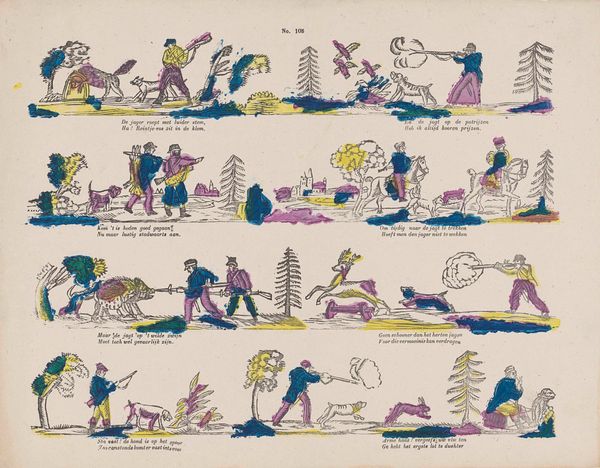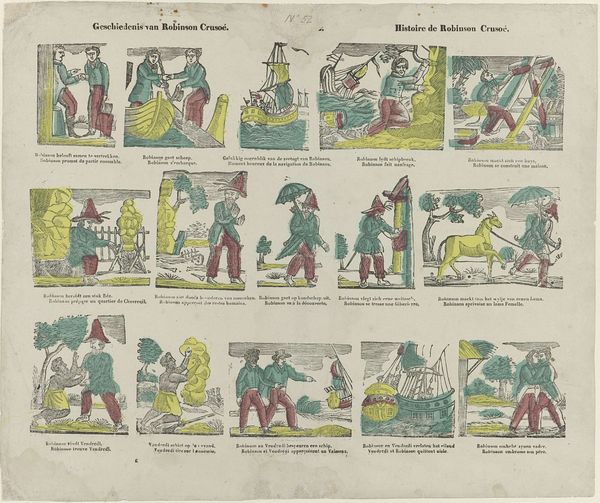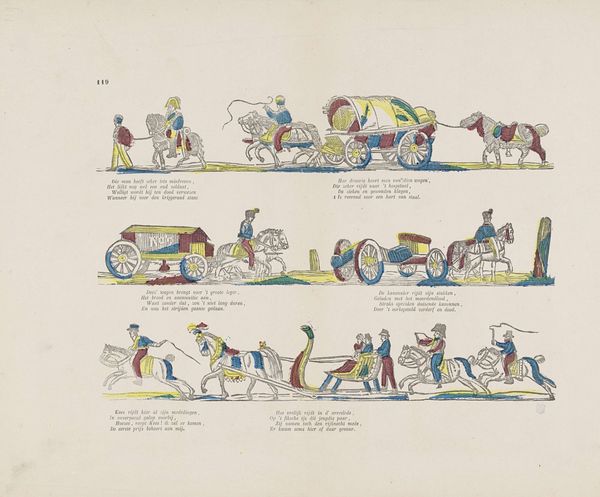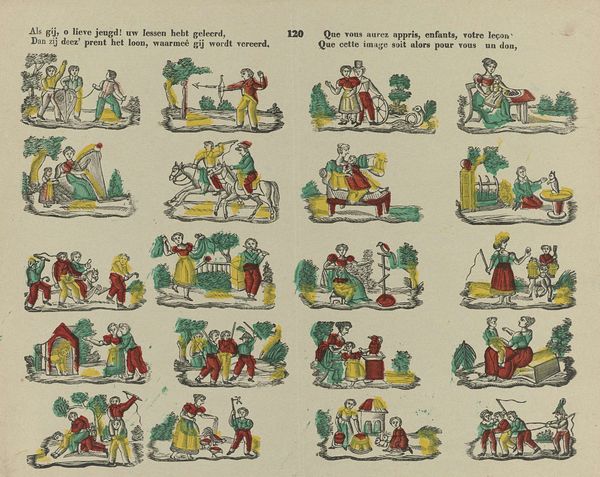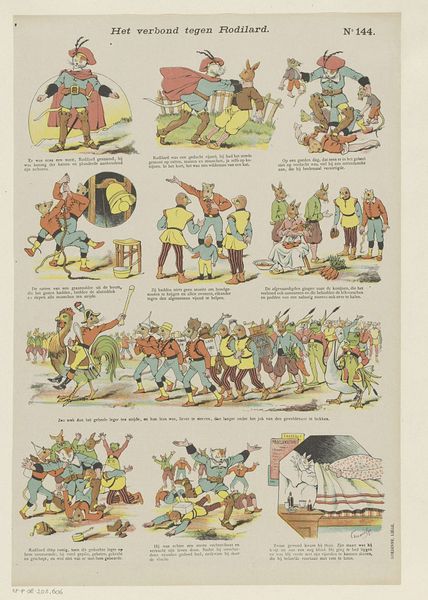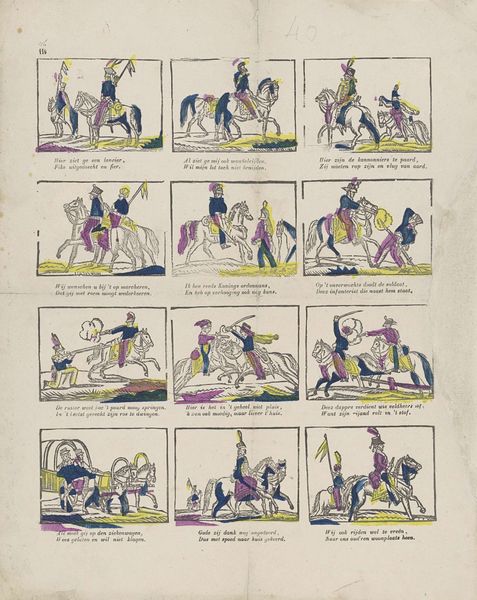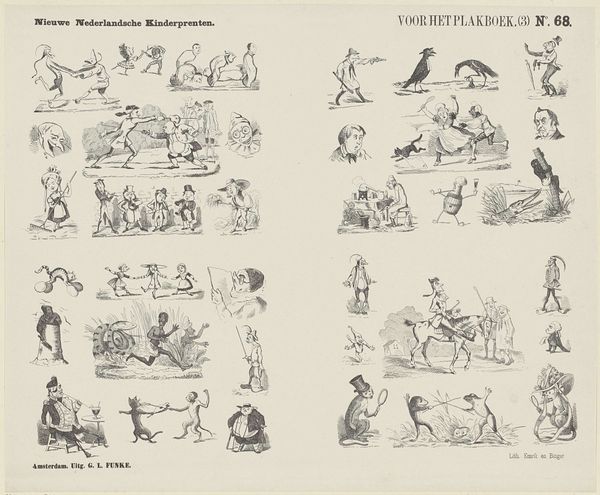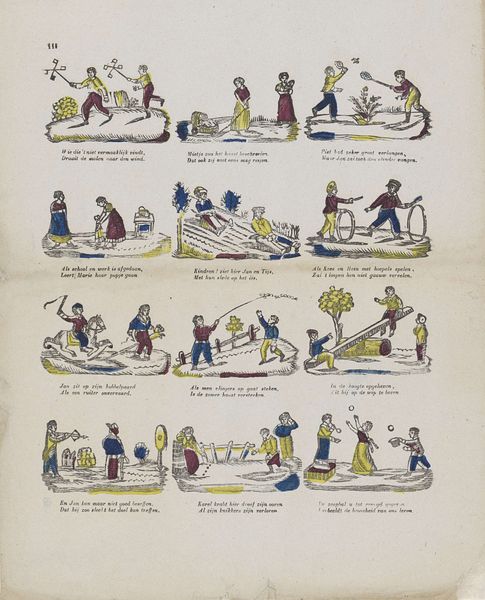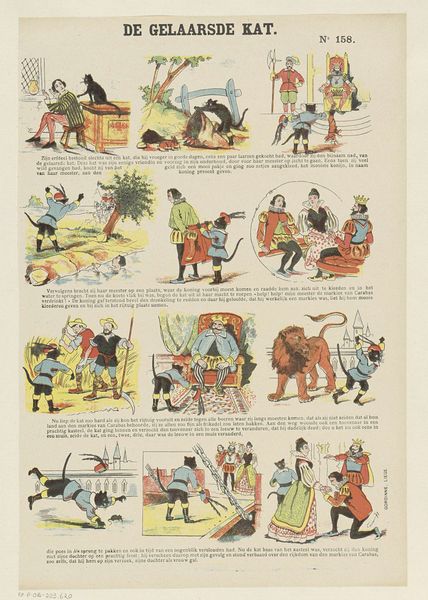
drawing, print, ink
#
drawing
#
quirky sketch
#
narrative-art
# print
#
pen sketch
#
sketch book
#
personal sketchbook
#
ink
#
sketchwork
#
ink drawing experimentation
#
folk-art
#
sketchbook drawing
#
genre-painting
#
storyboard and sketchbook work
#
sketchbook art
#
realism
#
initial sketch
Dimensions: height 307 mm, width 380 mm
Copyright: Rijks Museum: Open Domain
Curator: This piece, "Jachttaferelen" from between 1848 and 1881, presents a fascinating series of hunting scenes rendered in ink, a drawing that also functions as a print. What strikes you about it? Editor: Well, first, I notice the figures feel quite naive, almost like something from a children's book. There’s a storyboard quality to it, but with these strange blocks of color. How do you interpret this work, considering its historical context? Curator: The childlike quality you observe actually provides a crucial entry point. Consider how representations of leisure activities, such as hunting, were often deployed in the 19th century to reinforce ideas about class, masculinity, and dominance over nature. Do you notice anything in the scenes that might be unsettling or contradictory to that narrative? Editor: I guess... the simplicity almost undermines the seriousness you might expect from a hunting scene. There's not much grandeur or heroism here, but there IS something subversive about depicting it so plainly. Curator: Precisely! The naiveté can be read as a commentary on the very notion of the hunt. Instead of glorifying the hunter, the artist may be gently critiquing the violence and social posturing often associated with such activities, which is what makes the colour choice such a key factor when interpreting the artwork as a whole. What implications does this suggest? Editor: So, it's not just a simple genre scene, but possibly a social critique wrapped in a seemingly innocent package? It’s definitely challenged my initial assumptions. Curator: Absolutely. It pushes us to question whose stories get told, and how, and what visual languages are deemed acceptable for conveying specific messages, wouldn't you say? Editor: Yes, definitely food for thought. Now I’m seeing layers of meaning I completely missed at first glance. Curator: Excellent! It reminds us to be critical of even the seemingly simple artworks, and that is why art is worth exploring.
Comments
No comments
Be the first to comment and join the conversation on the ultimate creative platform.
